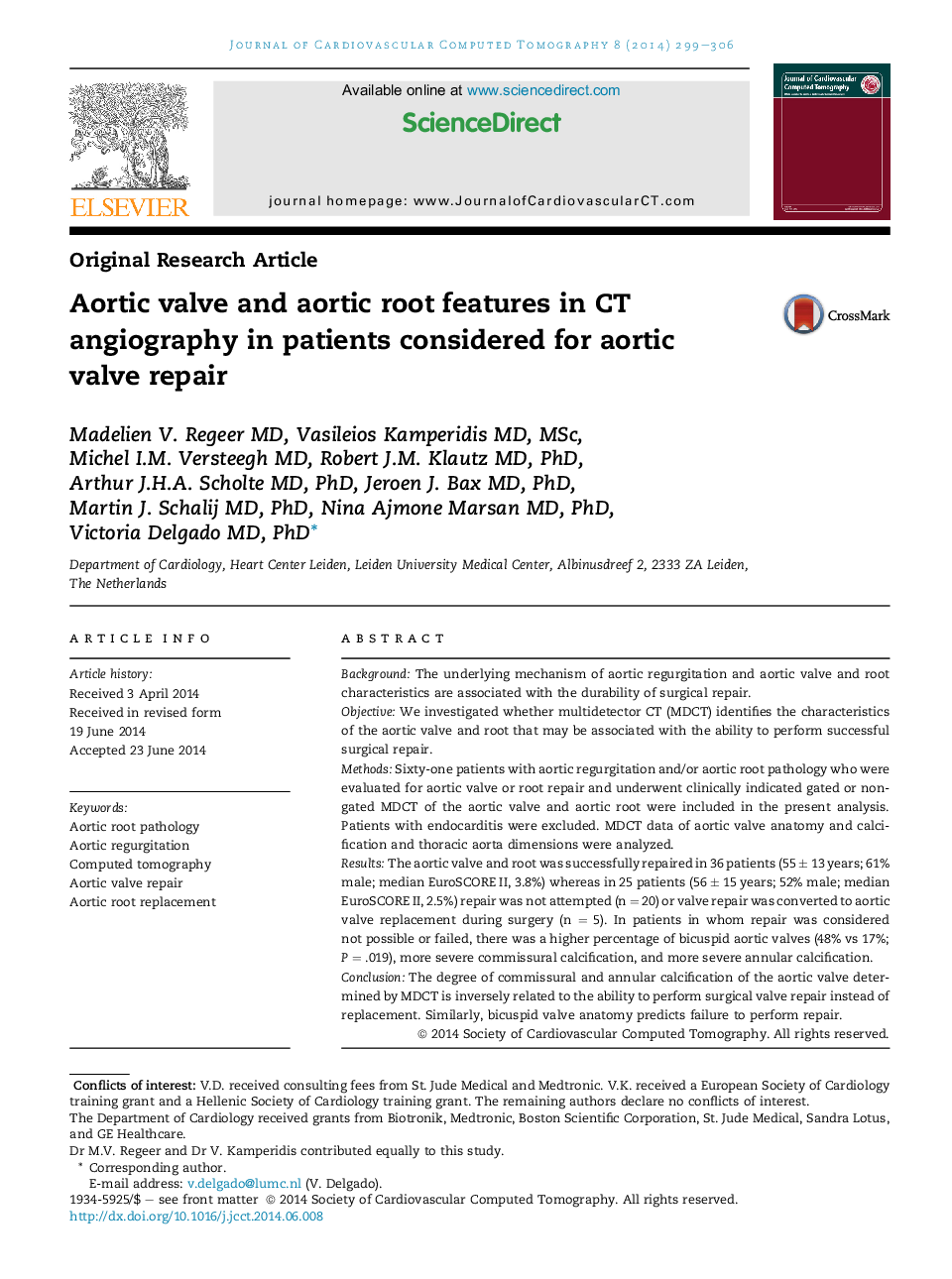| Article ID | Journal | Published Year | Pages | File Type |
|---|---|---|---|---|
| 2964428 | Journal of Cardiovascular Computed Tomography | 2014 | 8 Pages |
•CT angiography was evaluated to determine aortic valve reparability.•Less commissural and annular calcification is associated with successful repair.•Bicuspid valve anatomy is less favourable for successful aortic valve and root repair.
BackgroundThe underlying mechanism of aortic regurgitation and aortic valve and root characteristics are associated with the durability of surgical repair.ObjectiveWe investigated whether multidetector CT (MDCT) identifies the characteristics of the aortic valve and root that may be associated with the ability to perform successful surgical repair.MethodsSixty-one patients with aortic regurgitation and/or aortic root pathology who were evaluated for aortic valve or root repair and underwent clinically indicated gated or nongated MDCT of the aortic valve and aortic root were included in the present analysis. Patients with endocarditis were excluded. MDCT data of aortic valve anatomy and calcification and thoracic aorta dimensions were analyzed.ResultsThe aortic valve and root was successfully repaired in 36 patients (55 ± 13 years; 61% male; median EuroSCORE II, 3.8%) whereas in 25 patients (56 ± 15 years; 52% male; median EuroSCORE II, 2.5%) repair was not attempted (n = 20) or valve repair was converted to aortic valve replacement during surgery (n = 5). In patients in whom repair was considered not possible or failed, there was a higher percentage of bicuspid aortic valves (48% vs 17%; P = .019), more severe commissural calcification, and more severe annular calcification.ConclusionThe degree of commissural and annular calcification of the aortic valve determined by MDCT is inversely related to the ability to perform surgical valve repair instead of replacement. Similarly, bicuspid valve anatomy predicts failure to perform repair.
